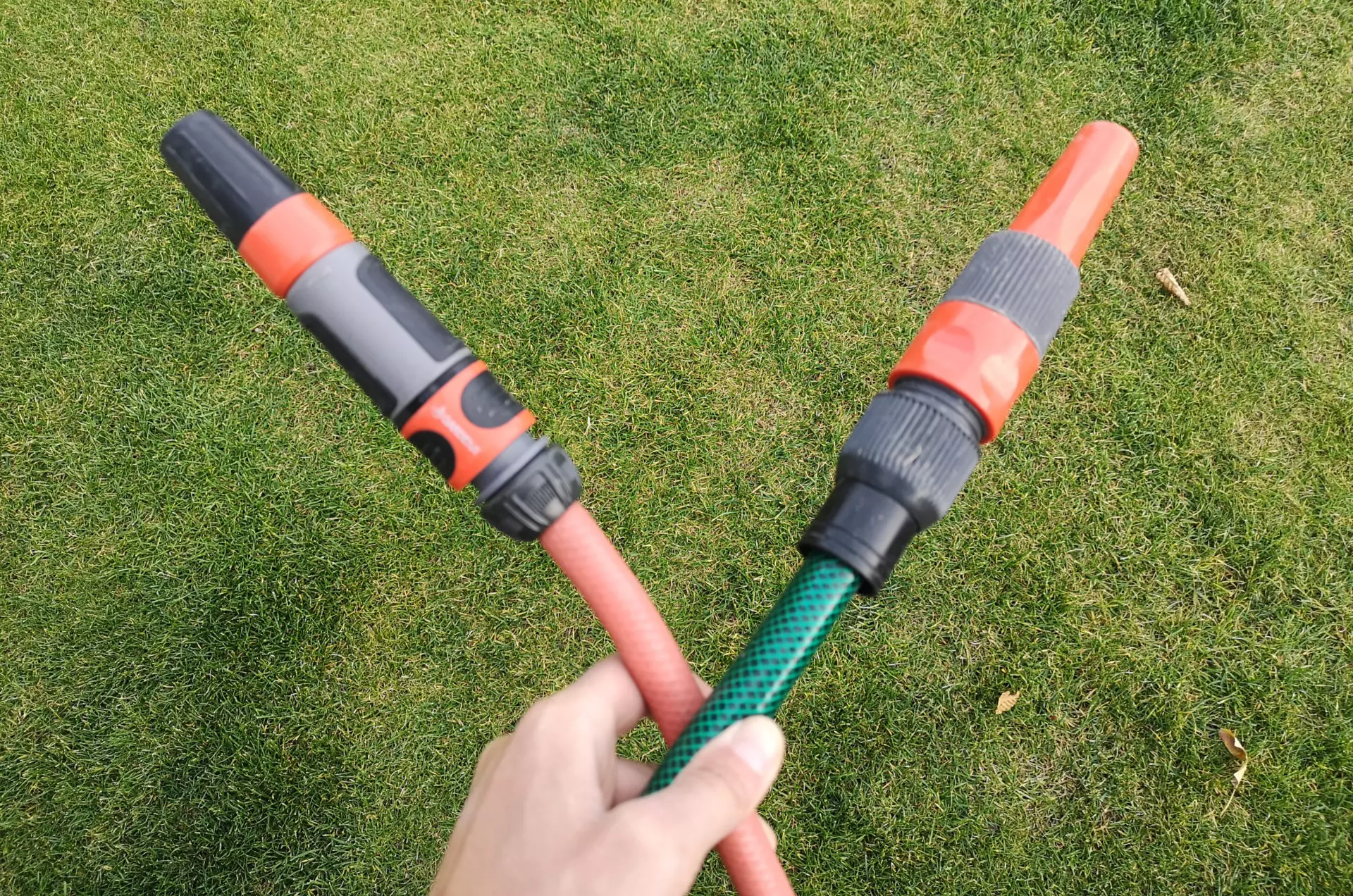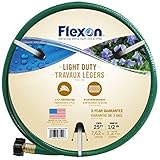If you have not had much to do with watering before, then the question inevitably arises: Would you rather use a 1/2 inch or a 3/4 inch garden hose? Or which of the two do you need for which purpose?
At first glance, the difference seems rather small, considering the different diameter of the hose:
- 1/2 inch
- 3/4 inch
The inner diameter of the hose is measured here, i.e. the cross-section that is available for the water to flow through. Depending on the hose manufacturer, there may be small deviations, so that the hose diameter can be slightly smaller or larger.
What amounts of water are possible?
In practice, the approx. 50% larger diameter of the 3/4 inch hose enables a significantly higher water flow, since with the small 1/2 inch hose the larger the water volume, the greater the friction and thus the pressure loss.
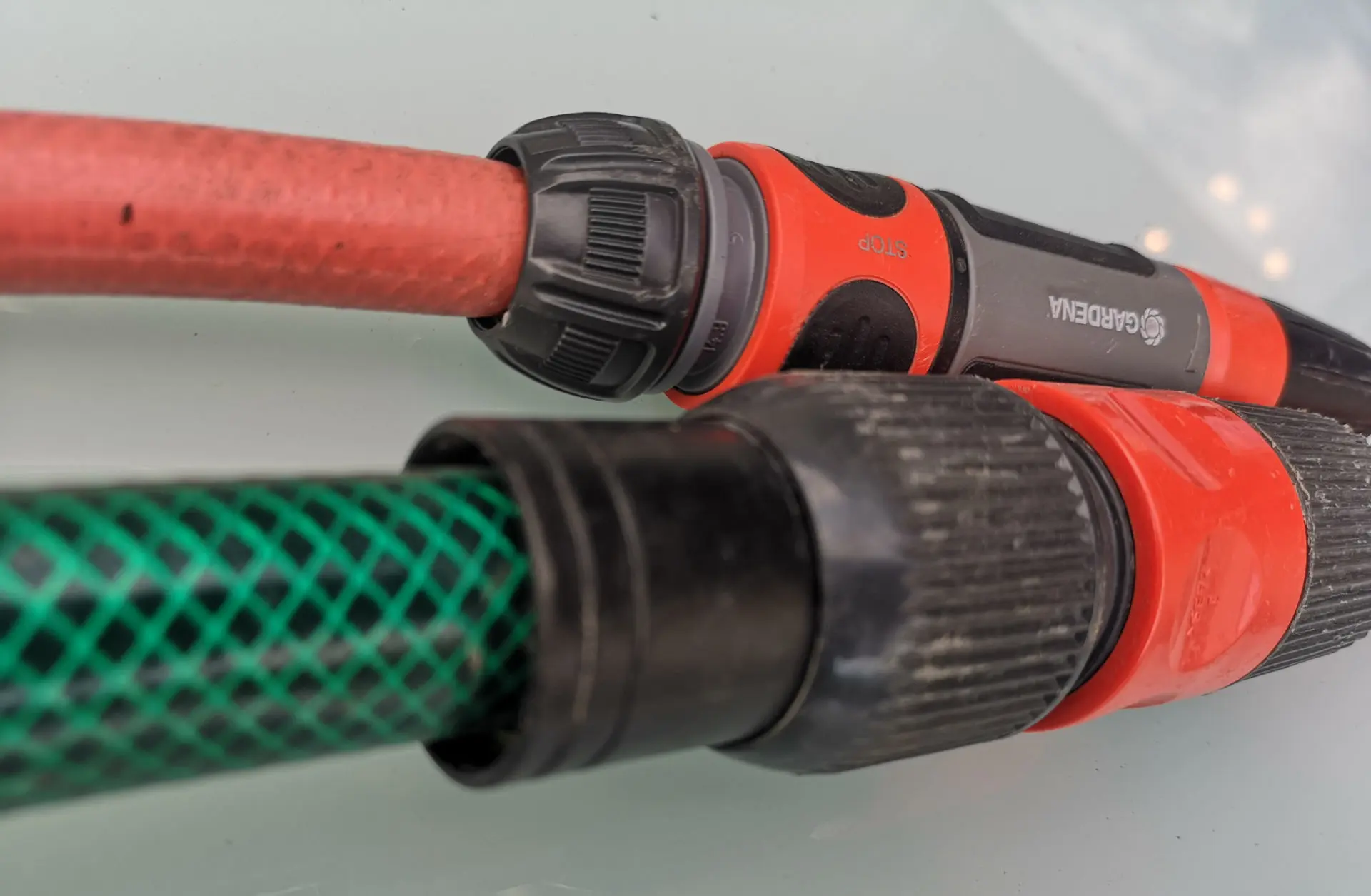
The size difference between 1/2 inch and 3/4 inch hose doesn’t seem dramatic at first glance, but it has a big impact when you want to work with large amounts of water
Illustrated using the example of an outdoor water tap with typical performance data. This has a pressure of 60 psi at the tap outlet and a maximum flow rate of 600 gallons per hour determined in the bucket test:
If I connect a 75 feet long 1/2 inch hose to it, about 240 gallons per hour can be poured with this in the experiment I carried out. Could this amount of water be increased by using a water source with an even higher pressure and maximum flow rate? Yes, but with more effort you lose an increasing proportion of the additional effort, since the friction on the outer walls of the pipe increases extremely due to the small diameter and so the extra pressure loss would negate a large part of the extra effort.
Conclusion: With a 75 feet 1/2 inch hose and an averagely powerful water connection or averagely powerful pump, you can calculate with around 240 gallons of water per hour.
The balance looks a little better if you only use a 7 feet long 1/2 inch hose instead of a 75 feet long 1/2 inch hose. In this case, the 1/2 inch hose can transport around 370 gallons of water per hour in my test.
And as expected, a short 7 feet long 3/4 inch hose performed best, through which 600 gallons per hour ran in the test, i.e. the entire maximum flow rate. With this water flow rate, the 3/4 inch was hardly an obstacle and the entire water volume was therefore available. Of course, as the hose length increases, there would also be a reduction in the amount of water with a 3/4 inch hose, but to a much lesser extent than with the 1/2 inch hose.
With a flow rate of 500 gallons, you only lose around 3 psi of pressure per 30 feet hose length with a 3/4 inch hose. For comparison: With a 1/2 inch hose, the pressure loss with this amount of water is 20 psi per 30 feet hose length.
Note: In principle, as a rule of thumb, you can say that with a 1/2 inch hose you have about 6 times the pressure loss as with a 3/4 inch hose!
Where do you use which hose?
A 1/2 inch hose, typically on a hose trolley or in a hose reel, is ideal for typical watering work in the garden, i.e. watering beds, plant pots and boxes and the lawn. On the one hand, the sharper water jet and the large amount of water of a 3/4 inch hose would be rather unsuitable and on the other hand, a longer version of a 3/4 inch hose filled with water is also quite heavy and bulky, so that one would have little fun with it carrying through the garden.
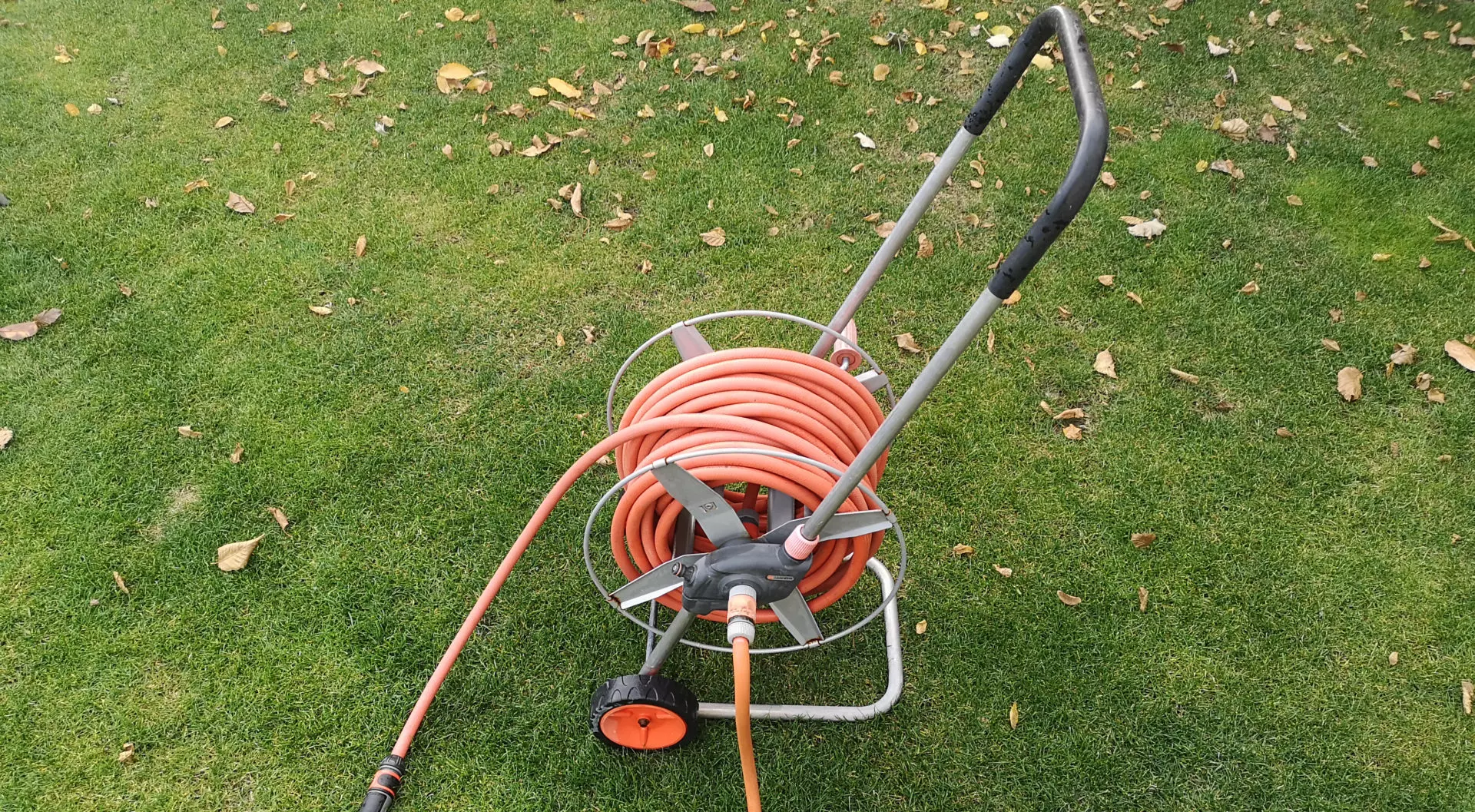
A 1/2 inch hose on a hose trolley is a popular all-rounder for all kinds of watering work in the garden
For typical watering work in the garden, the amount of water available per hour with a 1/2 inch hose should not be a problem. The only exception here is larger lawns, where watering with a 1/2 inch hose can be a longer affair. Larger here already means areas with 500 square feet upwards, because with correct irrigation, 500 square feet of lawn require 260 and more gallons of water and that requires 1 hour of manual watering! Therefore, you will have little pleasure in watering such and much larger lawns with the hose in the long run. Not even with the 3/4 inch hose, which would be a little faster but bulkier. But bushes, beds and individual plants are fine with it.
A 3/4 inch hose can be worthwhile if you have plants that need a lot of water to water, e.g. trees. So that it does not become too bulky, you can either use a hose trolley, most hose trolleys can also be used with 3/4 inch instead of 1/2 inch hoses or extra large hose trolleys (Amazon Link) are also available. Alternatively, you can create connection points for the hose near the plants to be watered and then use a less bulky, shorter 3/4 inch hose from there. For example, a water socket could be provided every few feet, to which the 3/4 inch piece of hose could then be coupled.
Another use of a 3/4 inch hose is to fill a pool or other very large tanks. With the 1/2 inch hose it would take forever here, with the 3/4 inch hose it is much faster. In addition, water sockets and other connection points can be easily converted temporarily from 1/2 inch to 3/4 inch. A possible scenario would be to use the 1/2 inch hose in daily use, if you need very large amounts of water from time to time, then you convert the connection point and plug in the 3/4 inch hose.
A third possible option is the use of the hose as a permanent water supply, i.e. to direct the water over longer distances above ground to a certain point in order to be able to use it there with as little pressure loss as possible. So as a counterpart to an underground pipeline pipe. In this case, the hose should be at least 3/4 inch, alternatively you can also think about a 1 inch hose.
5/8 inch hose
Especially in the USA, 5/8 inch hoses are also available on the market as a compromise between 1/2 inch and 3/4 inch. Their diameter is exactly between the other two sizes and allows a significantly higher flow rate than 1/2 inch hoses, but is not quite as heavy and unwieldy as 3/4 inch hoses.
What makes a good garden hose?
Probably the most important point where a difference in quality has a strong effect is the dimensional stability. Better hoses are flexible, but don’t kink or twist during use, or hardly at all. This is a shortcoming that can often be observed, especially with very cheap garden hoses: You walk through the garden with the hose and suddenly no more water comes to the end of the hose because the hose has kinked somewhere. You then have to straighten the kink manually so that the water can continue to flow.
In order to achieve the highest possible dimensional stability, the hose manufacturers use special materials or a multi-layer construction. The hoses are mostly reinforced with a special fabric, usually a cross weave or a spiral weave. Which of the two was used can usually be seen on the outer skin of the hose, where either a diamond pattern (= cross weave) or a pattern of lines running parallel to each other (= spiral weave) can be seen. Spiral weave hoses tend to be slightly higher quality and more flexible than cross weave hoses and also cost a little more.
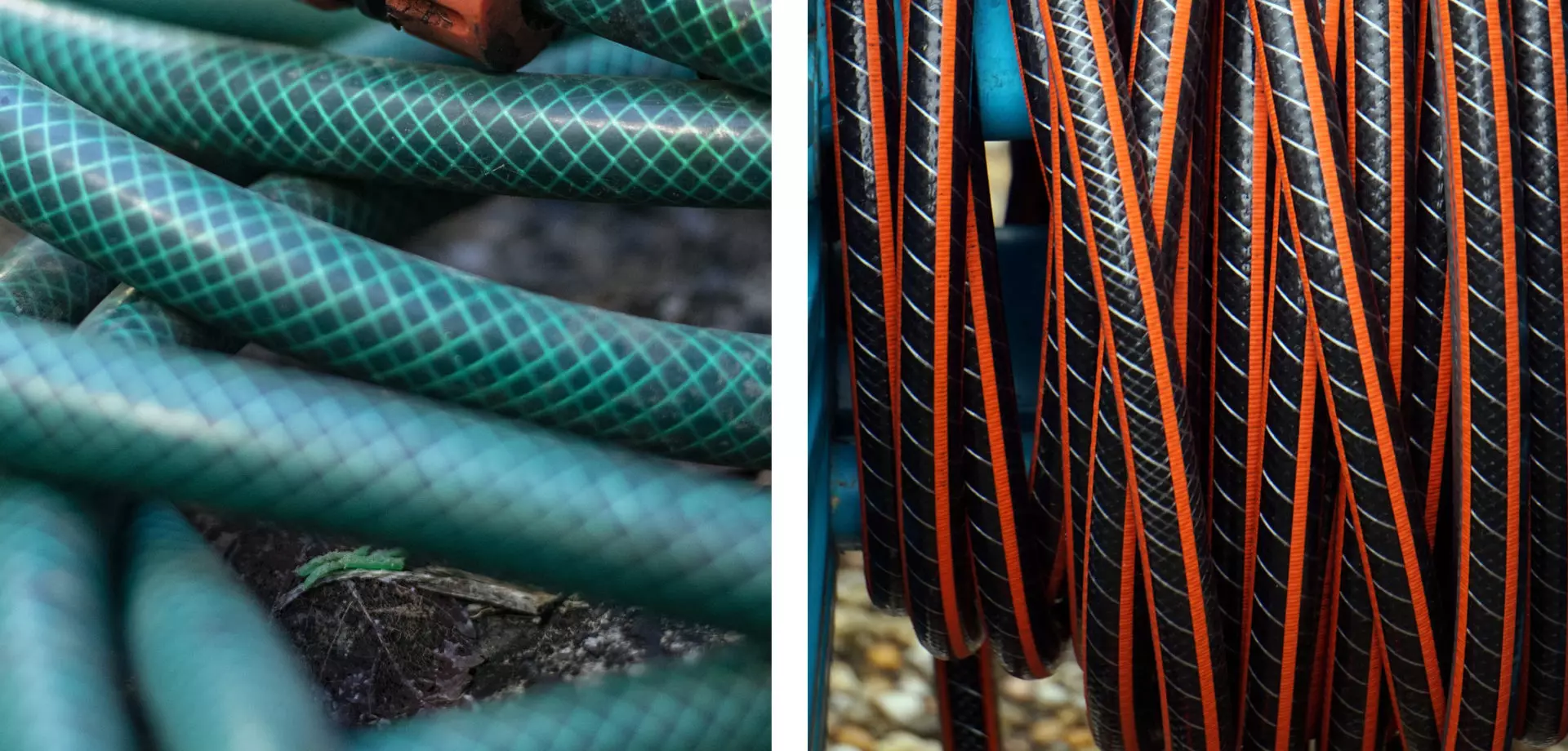
On the left a typical cross weave pattern, on the right a spiral weave pattern
Another factor is the burst pressure. This is between 300 and 400 psi for most garden hoses. Sometimes even higher for some models. This number indicates the pressure that would be necessary to burst the hose. It thus gives an indication of the robustness of the hose. The permissible operating pressure of the hoses is significantly lower (approx. 1/3 of the bursting pressure).
It is difficult to deduce how durable and weather-resistant a hose is from key figures and manufacturer information. Here you can only fall back on the experience of others and study reviews from previous buyers. A long-term manufacturer’s guarantee is also an indication of a long-lasting product. Gardena, for example, gives a guarantee of up to 30 years on its hoses.
It becomes much more expensive if you need hoses that are suitable for drinking water or food-safe. Such hoses are made of materials that are allowed to come into contact with food and that do not pose a risk of contaminating the water. In addition, such hoses must have an inner surface that is as smooth as possible and easy to clean. In order for a hose to be able to call itself suitable for drinking water, these properties must be proven with its own special certification. Such hoses are used e.g. for water use at the campsite.
Rubber hoses
Rubber hoses are a further quality level above hoses with spiral weave and are particularly popular in the professional sector. The normal hoses are usually made of PVC. Rubber hoses are particularly robust, pressure-resistant and resistant to weather and other external influences. In addition, the caoutchouc processed as rubber is free of harmful substances and environmentally friendly. Disadvantages of rubber hoses are the slightly higher own weight and the higher price.
Gold snake hose
The gold snake hose is practically the Mercedes among the rubber hoses. You can easily recognize it visually by the distinctive yellow wavy line on a black background. The laboriously manufactured hose is virtually indestructible, can be driven over and lasts forever. The burst pressure is 1088 psi for the 3/4 inch model. It is manufactured by the German manufacturer ContiTech, which belongs to the Continental Group, which is known for car tires.
However, this quality also has its price, the price for 3 feet of hose is roughly the same as that for which you can already get a complete hose elsewhere.
1/2 inch garden hoses on Amazon:
Flexon 1/2-Inch by 50-Foot Reinforced Garden Hose FR1250,Green
$16.20 (as of 13. December 2025 18:44 GMT +01:00 - More infoProduct prices and availability are accurate as of the date/time indicated and are subject to change. Any price and availability information displayed on [relevant Amazon Site(s), as applicable] at the time of purchase will apply to the purchase of this product.)Eden 94051 Rubber Garden Hose 1/2 in. x 50 ft, DIY Hose Set
Flexon 1/2" x 25ft Light Duty Garden Hose – Lightweight, Flexible, Kink-Resistant, Durable Vinyl, Leak-Proof Couplings, Weather-Resistant Water Hose for Lawn, Garden, and Outdoor Use
Camco TastePURE 10-Ft Water Hose - RV Drinking Water Hose Contains No Lead, No BPA & No Phthalate - Features Diamond-Hatch Reinforced PVC Design - 1/2” Inside Diameter, Made in the USA (22743)
3/4 inch garden hoses on Amazon:
Gilmour Pro Commercial 3/4" x 75' Heavy Duty Water Hose, Durable and Kink Resistant 75 ft Garden Hose
Giraffe Tools Garden Hose 12ft x 3/4", Heavy Duty Water Hose, Flexible, Hybrid Lightweight Hose with Swivel Handle, Male to Female Fittings, Burst 600 PSI
Water Hose 3/4 Inch 8M0109048 8M0215001 Fit for Mercruiser Alpha One Gen 1 & 2
$27.99 (as of 12. December 2025 17:57 GMT +01:00 - More infoProduct prices and availability are accurate as of the date/time indicated and are subject to change. Any price and availability information displayed on [relevant Amazon Site(s), as applicable] at the time of purchase will apply to the purchase of this product.)Flexzilla Garden Hose 3/4 in. x 50 ft., Lightweight All-Weather Water Hose, Durable and Flexible, Leak-Free Connections
What special forms of hoses are there?
Of particular interest here are the flexible garden hose and the spiral garden hose:
Flexible garden hose
A flexible garden hose, also referred to in sales offers as a flexi hose or stretchable garden hose, is a hose made of stretchable material that increases in length by up to 3 times during use and, after the work is done, returns to its original size like an accordion pulls together. This has the main advantage that these hoses are very space-saving and can therefore be easily stowed away. And you don’t need to roll them up or down again. In addition, they are very light, but pay for this advantage with somewhat reduced robustness and durability. They are also not designed for higher water pressure and large volumes of water. As a short hose for a balcony, a terrace or a small garden, flexible garden hoses are definitely worth considering, and Amazon also offers some very well rated flexible hoses.
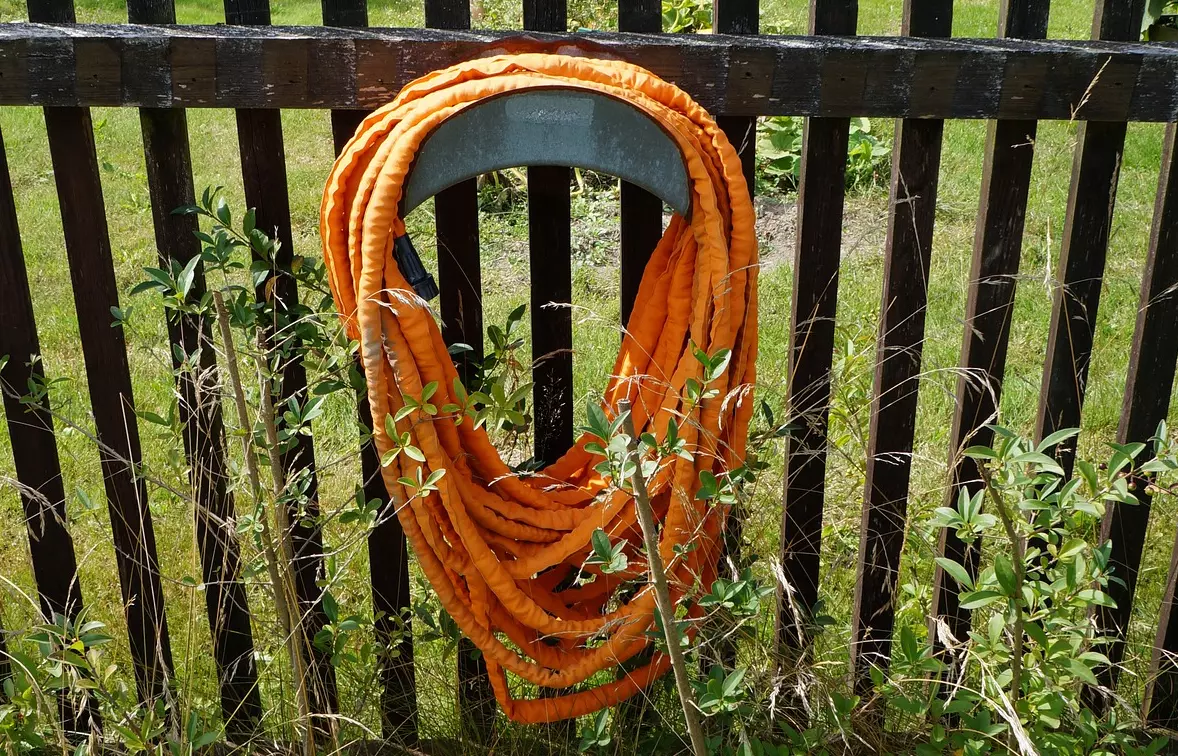
A flexible garden hose can be stored quite easily after the work is done due to its small size and low weight
Flexible garden hoses on Amazon:
Flexi Hose with 8 Function Nozzle, 50FT - Lightweight Expandable Garden Hose, No-Kink Flexibility, 3/4 Inch Solid Brass Fittings and Double Latex Core
Flexi Hose Expandable Garden Hose with 8 Function Nozzle, 50FT - Lightweight Retractable Garden Hose, Water Hose - No-Kink Flexibility, 3/4 Inch Solid Brass Fittings and Double Latex Core
$59.99 (as of 12. December 2025 17:57 GMT +01:00 - More infoProduct prices and availability are accurate as of the date/time indicated and are subject to change. Any price and availability information displayed on [relevant Amazon Site(s), as applicable] at the time of purchase will apply to the purchase of this product.)UNCO- Stainless Steel Metal Hose with 4 Function Brass Nozzle, 75 ft, No Kink, Metal Garden Hose
$37.99 (as of 12. December 2025 17:57 GMT +01:00 - More infoProduct prices and availability are accurate as of the date/time indicated and are subject to change. Any price and availability information displayed on [relevant Amazon Site(s), as applicable] at the time of purchase will apply to the purchase of this product.)Flexi Hose Upgraded Expandable Garden Hose Extra Strength 3/4 Solid Brass Fittings - The Ultimate No-Kink Flexible Water Hose (Black, 50 FT)
$56.99 ($1.14 / feet) (as of 12. December 2025 17:57 GMT +01:00 - More infoProduct prices and availability are accurate as of the date/time indicated and are subject to change. Any price and availability information displayed on [relevant Amazon Site(s), as applicable] at the time of purchase will apply to the purchase of this product.)Spiral garden hose
The basic principle of the spiral garden hose is very similar to that of the flexible garden hose. With the difference that the hose does not stretch, but is manufactured in such a way that it does not run straight in the starting position, but forms spiral circles. If you pull it long, the spiral shape increasingly changes to a straight line and the hose unfolds its full length. After use, the hose automatically returns to its original spiral shape. The difference between the initial shape and the maximum possible length is even greater here than with the flexible garden hose. The hose can be stowed away particularly well in its original form, e.g. hanging it on a wall bracket or placing it in a small basket. And like the flexible garden hose, there is no need to unroll and roll it up again.
However, it should be noted that the manufacturer’s specifications for the hose length cannot be achieved in practice, since you would have to pull the hose straight with extreme effort to align it in its full length! In reality, the end is well before the stated maximum. Spiral garden hoses are also only available with a relatively small diameter. This is only 0.3 to 0.4 inches and thus significantly below the 1/2 inch of a standard 1/2 inch hose. Spiral garden hoses are therefore only suitable for applications with smaller water requirements and only short hose lengths of 30 to a maximum of 50 feet are offered.
Spiral garden hoses on Amazon:

